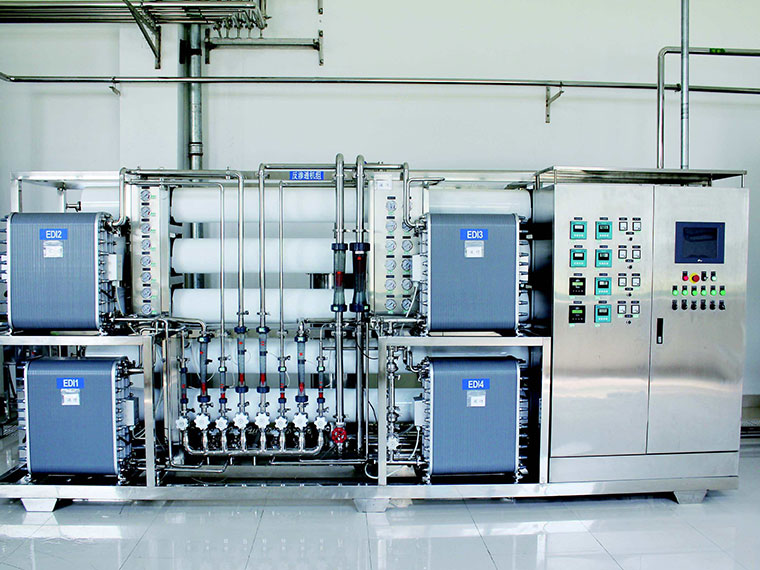
Ultra-pure water edi, also known as electro-desalination, skillfully combines electrodialysis technology and ion exchange technology, through the selective permeation of anion and cation by the anion and cation exchange membranes and the ion exchange resin for ion exchange, Under the action of a direct current electric field, the directional migration of ions is realized to complete the deep desalination of water. At the same time, the hydrogen ions and hydroxide ions generated by the ionization of water regenerate the ion exchange resin, so it can be continuously produced without acid-base chemical regeneration. Take ultrapure water.
Product Details
Ultra-pure water edi, also known as electro-desalination, skillfully combines electrodialysis technology and ion exchange technology, through the selective permeation of anion and cation by the anion and cation exchange membranes and the ion exchange resin for ion exchange, Under the action of a direct current electric field, the directional migration of ions is realized to complete the deep desalination of water. At the same time, the hydrogen ions and hydroxide ions generated by the ionization of water regenerate the ion exchange resin, so it can be continuously produced without acid-base chemical regeneration. Take ultrapure water.We insist on being customer-centric, quickly respond to customer needs, and continue to create long-term value for customers to achieve customer success. To provide effective services to customers is the yardstick of our work direction and value evaluation. To achieve customers is to achieve ourselves.

High degree of automation

Low cost

Very low risk factor

Environmental protection